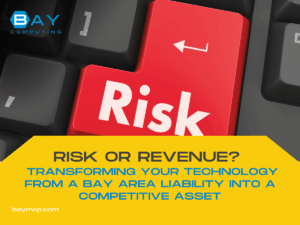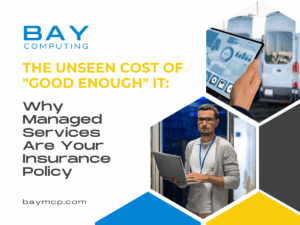Making the Decision to Move Your Business to the Cloud
Moving a business to the cloud is a major decision that can affect everything from costs to how a team works together. Many companies are now considering this step because of the push for better efficiency and the need to keep up with changing technology. A well-planned cloud migration can help save money, boost flexibility, and make it easier to scale as the business grows.
Before deciding, leaders should weigh the pros and cons and not just follow trends. Taking time to match cloud options with specific business needs is smart, since every business has its own goals and challenges. Experts recommend thinking through long-term impacts and making choices based on facts, not just what other businesses are doing. Read on to learn what questions to ask, which benefits to expect, and how to prepare for a smooth move to the cloud.
Evaluating the Move to Cloud
Successful cloud migration requires careful planning, clear understanding of cost factors, and attention to legal requirements. Businesses need to analyze if the cloud fits their unique needs while minimizing risks and maximizing value.
Assessing Business Needs and Readiness
Before moving to the cloud, organizations should list their main reasons for considering migration. These could include the need to scale faster, problems with hardware costs, or better disaster recovery.
A readiness check helps decide if current IT systems and staff skills match cloud requirements. Companies should evaluate technical complexity, internal resources, and training needs. If core business apps are outdated or difficult to support, moving them may require modernization.
Using clear criteria to prioritize which workloads move first can help. Some companies benefit by consulting experts or using external readiness tools to identify risks and opportunities. For more on how businesses assess their requirements and plan for the switch.
Analyzing Costs and ROI
Understanding the total cost of cloud migration is important. Direct costs might include subscription fees, data transfer charges, and expenses for reconfiguring applications.
ROI analysis goes beyond price. It should also consider soft benefits such as speed to market, staff productivity, or less downtime. Compare these costs and benefits against those of keeping servers on site.
Businesses should make use of financial checklists or calculators offered by many cloud vendors. It’s also helpful to plan for hidden costs, such as those arising during transition or from unexpected growth. Detailed ROI evaluations are key to knowing when cloud migration is worth it.
Understanding Security and Compliance Implications
Cloud solutions can improve security through regular patches and high-grade encryption. However, it is still essential to review how shared responsibility models work, as not all risks shift to the provider.
Companies should confirm that their chosen cloud platform meets both industry standards and local laws. Regular audits, strict user access controls, and encrypted storage are important steps. Businesses in highly regulated sectors may need to meet extra compliance requirements.
Key questions include:
- What data will be stored or processed in the cloud?
- Who will have access?
- Does the provider support needed certifications?
Careful consideration of security policies and compliance guidelines helps avoid costly mistakes. For more on balancing security and business goals.
A successful move to the cloud relies on matching business needs with the right cloud options, building a clear migration plan, and making sure everyone involved is ready for change. Taking time to plan before moving helps reduce risks and supports long-term success.
Choosing the Right Cloud Model
Selecting the best cloud model is a critical first step. Businesses can choose between public, private, hybrid, or multi-cloud models. Public cloud options give easy access and low upfront costs, while private clouds offer more control and security. A hybrid cloud blends on-premises infrastructure with public or private cloud, allowing businesses to balance workloads based on needs.
When deciding, organizations should consider their data sensitivity, compliance requirements, and workload types. Companies that need quick scaling often pick public cloud, while strict security settings push others toward private or hybrid models. For global teams or changing needs, a mix of clouds might give more flexibility.
Developing a Migration Roadmap
A clear migration roadmap helps guide each step of the cloud journey. The plan should start with a full assessment of existing IT systems, including applications, databases, and infrastructure. Companies outline what will move, in what order, and identify potential risks early.
Good roadmaps include phased migrations—moving less important or easy workloads first. Key steps may include:
- Inventory of assets
- Risk and cost assessments
- Setting timelines and priorities
- Building backup and rollback plans
A detailed roadmap helps prevent delays and surprises. It also supports budgeting, resource planning, and measures progress.
Stakeholder Engagement and Change Management
Getting buy-in from everyone affected by the cloud move is just as important as the technical steps. Stakeholders include IT staff, end-users, executive teams, and external partners. Clear communication helps manage expectations, address concerns, and build trust.
Change management involves training, support, and feedback loops. Providing training well in advance lessens confusion and resistance. Regular meetings and status updates help everyone stay informed. Leadership should also be open to questions to encourage a smooth transition.
Successful transitions often include:
- Early involvement of key users
- Training sessions and easy-to-access resources
- Regular communication about benefits and timelines
Engaging all stakeholders lowers the chance of problems and helps teams adjust to new ways of working.
Ready to Move Your Business to the Cloud with Confidence?
Migrating to the cloud is more than a tech upgrade—it’s a strategic move that can boost productivity, lower costs, and future-proof your business. At Bay Computing, we help you assess your readiness, choose the right cloud model, and build a secure, scalable migration roadmap tailored to your goals.
Whether you’re exploring public, private, or hybrid options, our experts ensure a smooth, secure transition—without downtime or confusion. Contact us now!
Schedule a Free Cloud Readiness Assessment Today and let’s map out your path to smarter, more secure IT operations.




